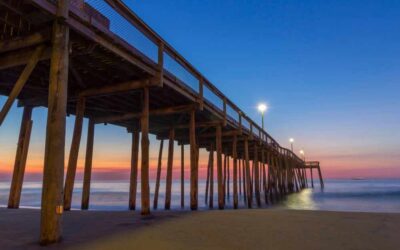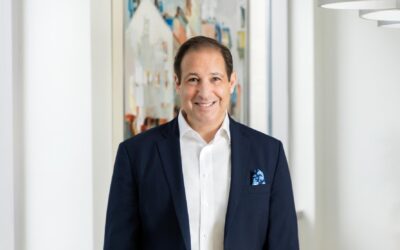Educating the public and policymakers on issues facing constituents is critical, especially when those constituents represent a growing part of the population – Marylanders over the age of 65.
Allison Ciborowski, President and CEO of our client LeadingAge of Maryland, recently wrote an opinion piece for Maryland Matters. LeadingAge is a membership organization representing not-for-profit aging service providers working together to ensure older adults have access to the services they need, when they need them, in the place they call home.
Maryland is aging quicker — let’s lead the nation in how we respond
Maryland Matters Op-Ed Commentary
by Allison Ciborowski
The recent article, “Maryland aging slightly faster than U.S. as a whole,” underscores a reality that those of us working in aging services have long anticipated. As the CEO of LeadingAge Maryland, a not-for-profit association representing over 150 organizations who provide housing, care, and services to more than 20,000 older Marylanders every year, I see the challenges — and opportunities — daily.
While Maryland has made meaningful strides to prepare for this demographic shift, more is needed, particularly as federal funding cuts threaten critical support like housing, nutrition, and community services. Gov. Wes Moore’s Longevity Ready Maryland Initiative offers a promising blueprint by promoting a whole-of-government, cross sector approach to aging policy.
We must reframe aging policy as cross-generational. When we invest in safe housing, accessible transportation, resilient communities, and better care systems we’re not just helping older adults, we’re building a more livable state for everyone. To be proactive, we must act with urgency and vision to ensure older Marylanders — and all Marylanders — can age well with health, dignity and purpose.
As the proportion of Marylanders 65 and older continues to grow, we urge policymakers, community leaders, and residents to focus on these critical priorities:
- Recognize the economic power of aging: Older adults are not a burden — they are contributors to Maryland’s economy as workers, volunteers, caregivers and consumers. With smart policy, we can grow Maryland’s “longevity economy.”
- Fully implement and fund the Longevity Ready Maryland recommendations: Ensure every state agency coordinates efforts to support Marylanders across the lifespan, and not just at certain points in time.
- Accelerate the development of affordable, accessible senior housing, particularly in rural and underserved areas: The newly released Maryland Housing Needs Assessment highlights the growing number of older adults in Maryland as well as the challenges facing low-income older adult renters. An estimated 55% of this population is housing-cost burdened, compared to only 12% of older adult homeowners. Maryland’s Department of Housing and Community Development could designate part of the state’s Low Income Housing Tax Credit Program funds for age-restricted developments that would provide more affordable rental options and offer coordinated on-site services. Outcomes for older adults vary widely by race, income and geography. Rural and underserved communities lack access to housing, care and transportation. A true longevity strategy must emphasize rural and underserved areas.
- Support family caregivers: They are the invisible backbone of the long-term care system, and would benefit from respite, education and financial resources.
- Address the direct care workforce crisis: Remove barriers to accessing education and licensure, ensuring sufficient state Medicaid rate increases to support increased wages and benefits, and strengthening transportation, child care and housing support for caregivers.
- Expand home- and community-based services, like PACE (Program of All-Inclusive Care for the Elderly): Such programs reduce reliance on institutional care. PACE provides comprehensive health care services to eligible seniors in the comfort of their own home, versus living in a nursing home. Lifting arbitrary caps (like the 200-person limit per site) and opening more opportunities for community-based aging innovations further reduces reliance on institutional care.
- Bridge the digital divide: Many older Marylanders remain excluded from telehealth, benefit enrollment and even basic internet access. A comprehensive aging strategy must include digital literacy and broadband access as core components.
- Leverage Maryland’s innovation ecosystem: Our state is home to world-class research universities, tech hubs and health systems. Maryland should lead in developing and testing new models of care, workforce development, and aging-in-place technology.
- Include older adults in climate resilience planning: Aging Marylanders face rising risks from extreme weather and natural disasters. Emergency management, housing, and public health planning must explicitly account for the vulnerabilities of older populations.
Maryland has the infrastructure, talent, and political will to become a national model for aging well. What we need now is coordinated action, sustainable funding and a shared vision that embraces aging and longevity as an opportunity — not a liability.
We can rise to meet this moment with tenacity and collaboration. Together, we can show the nation what it means to truly embrace longevity — and what it means to lead.
See the commentary posted on Maryland Matters.




